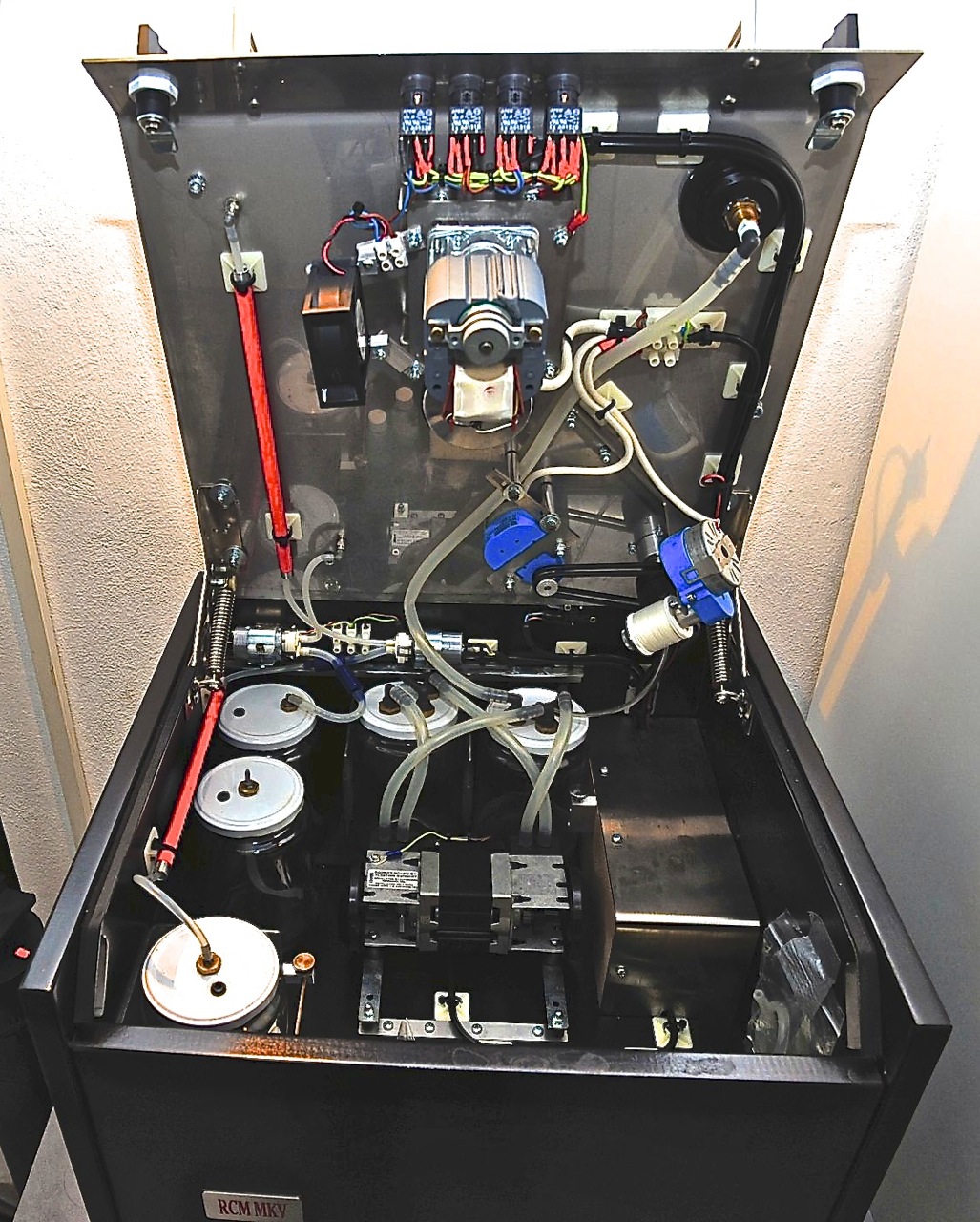fiogf49gjkf0d
When I started with Analog there were only a few record Cleaning Machines avaialble, I bought a VPI 16.5 with my first turntable.
Now, with the analog revival the last 10 years much more units are available now.
Some general info about Record Machines:
Most think that speed/comfort is identical to superior cleaning. That is not true.
You can't have it all.
Some swear on various cleaning fluids and others think that their removal is the key.
Type: The fast ones
For example VPI, Nitty Gritty, Clearaudio and all which are based on that design (a vacuum slot with 1 soft lip in front of it and another one behind).
The user can choose any fluid he prefers, can scrub the record or not, can choose the time the fluid will stay onto the surface before starting to remove it. This Design is technically very simple and you will find a unit which fits best to your wallet. They all do their job (more or less loud, with some ear plugs are recommended) but after a while they reach their cleaning limit and it is done (Physics: sucking power with a wide slot can‘t serve the same power compared to a point nozzle design). When the lips are wet (specially the one behind the vacuum slot after a few Records, the drying process is not able to clean the record in a way that it will be without noise finally. You have to clean it again later.
Type: The comfortable ones
For example Audio Desk, a Ultrasonic cleaner and a new Manufacturer, KLaudio.
The AD uses the same fluid again and again, through filters, but from the technical view it is not a final solution. The filters can‘t hold back everything, the user can‘t use all cleaning fluids, it is a comfortable Machine with a lot of technical parts which can create problems after some time.Sooner or later most AD run into Problems, based on its technical Design.
Type: The best ones
For example Keith Monks, Odyssey, Loricraft. There was only one Design which solved all problems, that was the Keith Monks Design. A point nozzle design which removes the fluid groove by groove, nothing will stay onto the record. It is technically much more advanced than most think, because you need some motors for the Arm, the platter speed and the string which is responsible for a good move of the Arm across the record. The User can try all kinds of fluid, all he need is something which is able to move into the grooves. The removal is done with a point nozzle and high vacuuming power (it is simple Physics, sucking power per diameter) and the record is cleaned groove by groove and at the end it is always dry and clean (except the user flooded the record with so much fluid that it is too much for the nozzle, then he does it a 2. Time and it is done).
But it is logic, that this kind of cleaning needs time. It was made for professionals who cleaned records all day long and needed the same superior result from the first record to the last (in those days Libraries and professional record dealers, Studios...).
Keith Monks passed away and Loricraft offered a cheaper copy (more or less, they start cheap and when you want better parts they will charge you for that) from this Design. The Keith Monks was always a final solution. Biting the price bullet and forget. There is also another one available in Germany, the Odyssey, it is from the former Monks Importer, same Design with a few improvements, but with superior technical parts.
In audiophile discussions there are a few directions (speed, price, cleaning solutions...) and of course, being owner of "the best".
The definition of the word „best“ is like a car discussion. I think, it is more helpful to show, what is responsible for what and based on that knowledge, every reader can choose the unit which matches his ideas or Phylosophy best.. I hope that my few lines will give some useful information about those units.
Each unit is better than doing nothing or using a wet towel.

The Records
This is also important imo, some have problems from the pressing plant (modern Reissues for example), you can clean them 15x and you will still hear an improvement, but they will never run really silent. Based on that we have the endless discussions about cleaning fluids, the cleaning time, enzymes and so on. I found the solution for myself: I trash them.
Older records can have groove damage, based on wrong VTF or defect diamond or bad Arm geometry.... then it is done, no way to improve them. Some have pops like mad, that can be based on blisters in vinyl or the owner before used alcohol and that one removed the elastic material in the groove walls. Then they are more or less defect too.
When you want to experiment, go for a normal, cheap, record, 80/90/100gr, made in the 70/80's, when they were sold in millions, the suprise is, they run always quiet, they have a lot of dynamics and when they are dirty, you can use the cheapest fluid and after one run they sound like new again. Music pleasure done right.
Kind Regards
Stitch